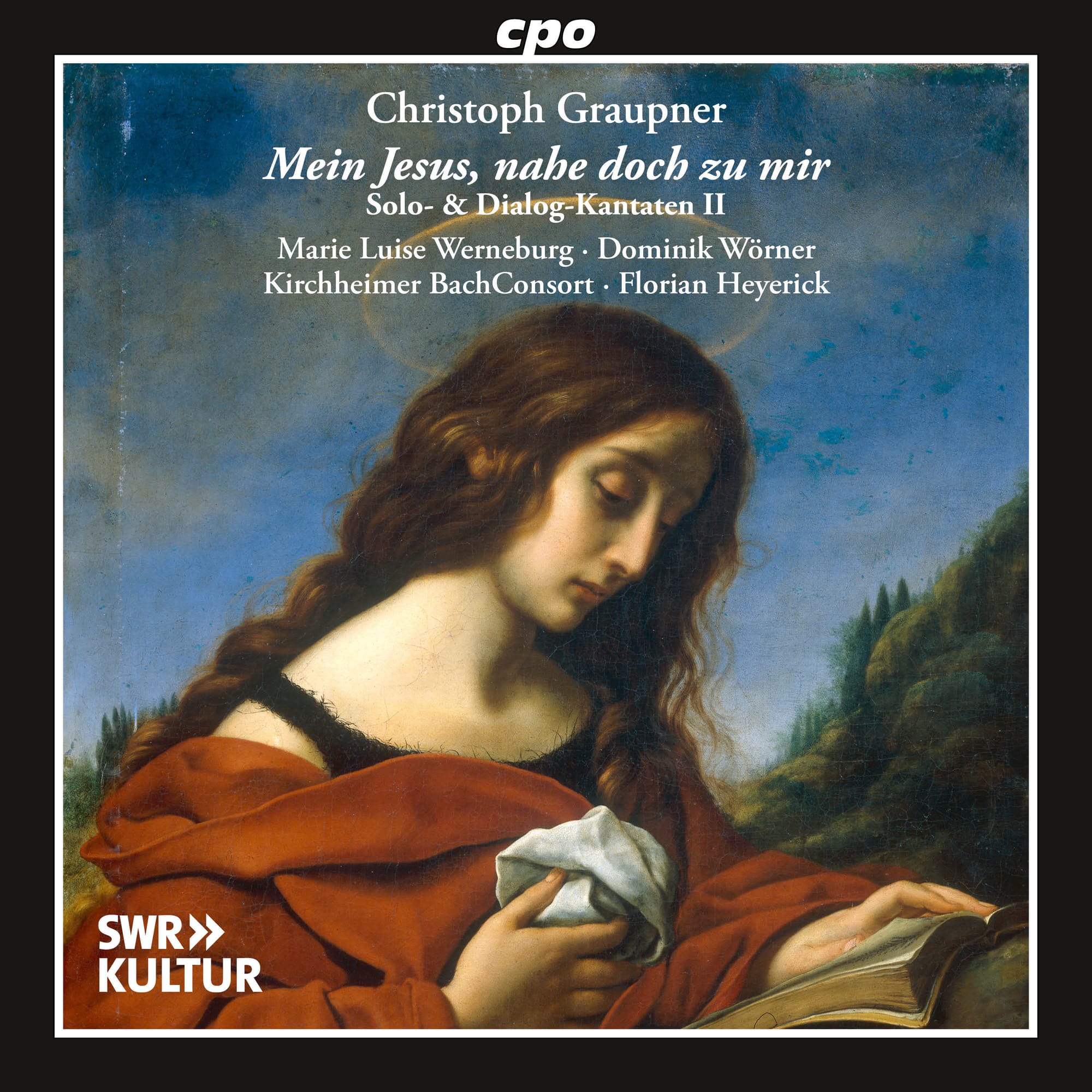
This is the first recording of these so-called “Dialogue Cantatas,” but it is certainly not the first appearance of the music of Christoph Graupner (1683-1760): on this site: previously, we covered his bassoon “cantatas” (also on cpo), and World Premiere recordings of his Easter Cantatas (Capriccio), plus the opera Antiochus und Stratonica (cpo) in this post.
It is the pure voice and superb enunciation of soprano Marie Luise Werneburg that opens the first cantata, Soll non das unschuldsvolle Lamm (Shall now the innocent go to its suffering, 1713, GWV 1119/13); dialogue is soon achieved with the firm bass of Dominik Wörner. But it is Wörner who shines in the aria, “Drum werd’ ich ohne mean Wersculden” (This through no fault of his own – the text refers to “the innocent lamb” going to his death):
The woodwind of the Kirchheime BachConsort come into their own in the soprano aria, “O main Gott, Was solo ice denizen” (Oh my God, what should I think):
This cantata is structured as a dialogue between the Soul (the seraphic soprano) and Jesus (bass); teh final uniting of both in “Ich gehe zum Tode” (I go to death) in which Jesus announces is Passion against the Soul’s exhortation to “Bleibe bee mir” is infinitely touching. An oboe obbligato acts as a third voice that links vocal and instrumental plateaux:
The cantata, Sehet, welch ein Mensch of 1716 (Behold, what kind of man, GWV 1124/16) is for soprano and orchestra. Graupner was an experienced opera composer, and both of these first two cantatas point towards that world in they dramatic intensity (and da caps arias). It is testament to Wernebug that she is equally compelling in Accompagnato as she is in aria. Here’s the former, “Ihr Menschn, kommt” (Come all people) followed by the aria with bassoon obbligato (beautifully played by Miko Fukui, who also double on the disc as Oboe II!), “Möchte night Das Herz zerpringen” (May our hearts not burst):
The same combination of soprano and bassoon brings the cantata to a close: “Süßes Blut” (Sweet blood). This is a remarkable aria in which Graupner fragments the vocal line and thins textures daringly. Werneburg is simply superb:
The third cantata is, “Mein Jesus, name doc zu mir” (My Jesus, daw close to me), a short cantata for soprano, bass oboe, violins and basso continuo, a sequence of three arias. Graupner sets a poem of three verses by G. C. Lehms, with no linking accompagnato or recitative. Oboe and bassoon ar foregrounded in the second (bass) aria, “Ich habe nichts als Ach und Pein” (I have nothing but sorrow and pain), full of tenderness:
The florid duet of the final aria, “So bleib’” (So stay) is more buoyant, strings moe buoyant here:
The next cantata begins with a chorale, the bass providing the melody, the orchestra the garnish of polyphony:
The text here is from the Gospel of St Mathew and describes Jesus’ outlining of teh idea of the love for God and one’s neighbour as the highest commandment. The first aria, featuring oboe and bassoon obligate, is like a gigue and is a bbsolutely delightful. “Nun main Jesus isn mein Leben” (Only my Jesus is my life):
The world darkens considerably as the protagonist considers his own death; it brightens when he realises that with Jesus he can face that event without fear, and there is something indeed trumpet-like about the oboe contributions to the ensuing aria, “Ohne Furcht und Grauen sterben” (To die without fear and dread). The end, on the word “Seligkeit” (translated by cpo as “bliss”) is quietly remarkable:
The final cantata, “Dein Schade ist verzweifelt böse” (Your bruise is incurable) beings the disc full circle in presenting a dialogue between a faithful soul (soprano) and Jesus (bass). The Biblical even is the healing of a man with palsy (St Matthew, chapter 9). But it begins with a passage from the Old Testament, from the book of the prophet Jeremiah, the German text again by Lehns. The soprano aria, “Trost und Hoffnung Sind veerloren” (Comfort and Hope are lost) though is unutterably beautiful, the organ background and later a halo of strings, perfect:
Jesus’ air in which he forgives the sou’s sins is remarkable in its floridity:
Oboes imitate trumpets in the final joyous duet, “Glaube nur, hoffe nur” (Only believe, only I hope) as the two voices seem to entice their lies like ivy:
As examples of Late Baroque Protestant church music via the church cantata, Graupner’s works here are of intrinsic historical interest; they just happen to be almost unbearably beautiful! A phenomenal disc, beautifully recorded and performed impeccably. Florian Heyerick direts with an unerring sense of style.
Available at Amazon here. Streaming below.







